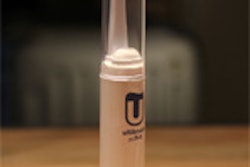New research has suggested that certain pigments in fruit, especially berries, offer health benefits and may even help prevent cancer.
Now scientists have exposed extracts from numerous berries high in those pigments to human saliva to see what kinds of health-promoting substances are likely to survive and be produced in the mouth, according to a study published in Food Chemistry (November 15, 2012, Vol. 135:2, pp. 738-747).
The researchers, from Ohio State University, discovered that two families of pigments that provide berries with their colors, called anthocyanins, are more susceptible to degradation in the mouth than are the other four classes of these pigments.
The study also showed that bacteria living in the mouth are responsible for most of the breakdown of these compounds that occurs in saliva. The researchers are investigating whether it's the berry pigments themselves or the products of their degradation that actually promote health.
These findings will contribute to the further development of confectionaries, gums, and other delivery devices for the prevention and possibly the treatment of conditions such as periodontal disease and oral cancers, according to the study authors.
Mark Failla, PhD, a professor of human nutrition at Ohio State and the interim chair of the department of human sciences, and colleagues asked 14 healthy individuals between the ages of 21 and 55 years to collect saliva in the morning before they had eaten breakfast or brushed their teeth. Research participants later collected additional saliva samples before and after they had rinsed their mouths with an antibacterial liquid.
The five fruits selected for study -- blueberries, chokeberries, black raspberries, red grapes, and strawberries -- allowed the scientists to test the six distinct families of the anthocyanin pigments. Researchers purified the anthocyanins from each berry type and added the extracts to saliva. The extent of the pigment degradation in saliva was primarily a function of the chemical structure of a given anthocyanin, Failla said.
Two families of anthocyanins consistently degraded when exposed to saliva: delphinidin and petunidin. Four other families were more stable: cyanidin, pelargonidin, peonidin, and malvidin.
The researchers' observations suggest that the bacteria within the oral cavity are a primary mediator of pigment metabolism. The bacteria are converting compounds that are present in the foods into metabolites, Failla explained.



















